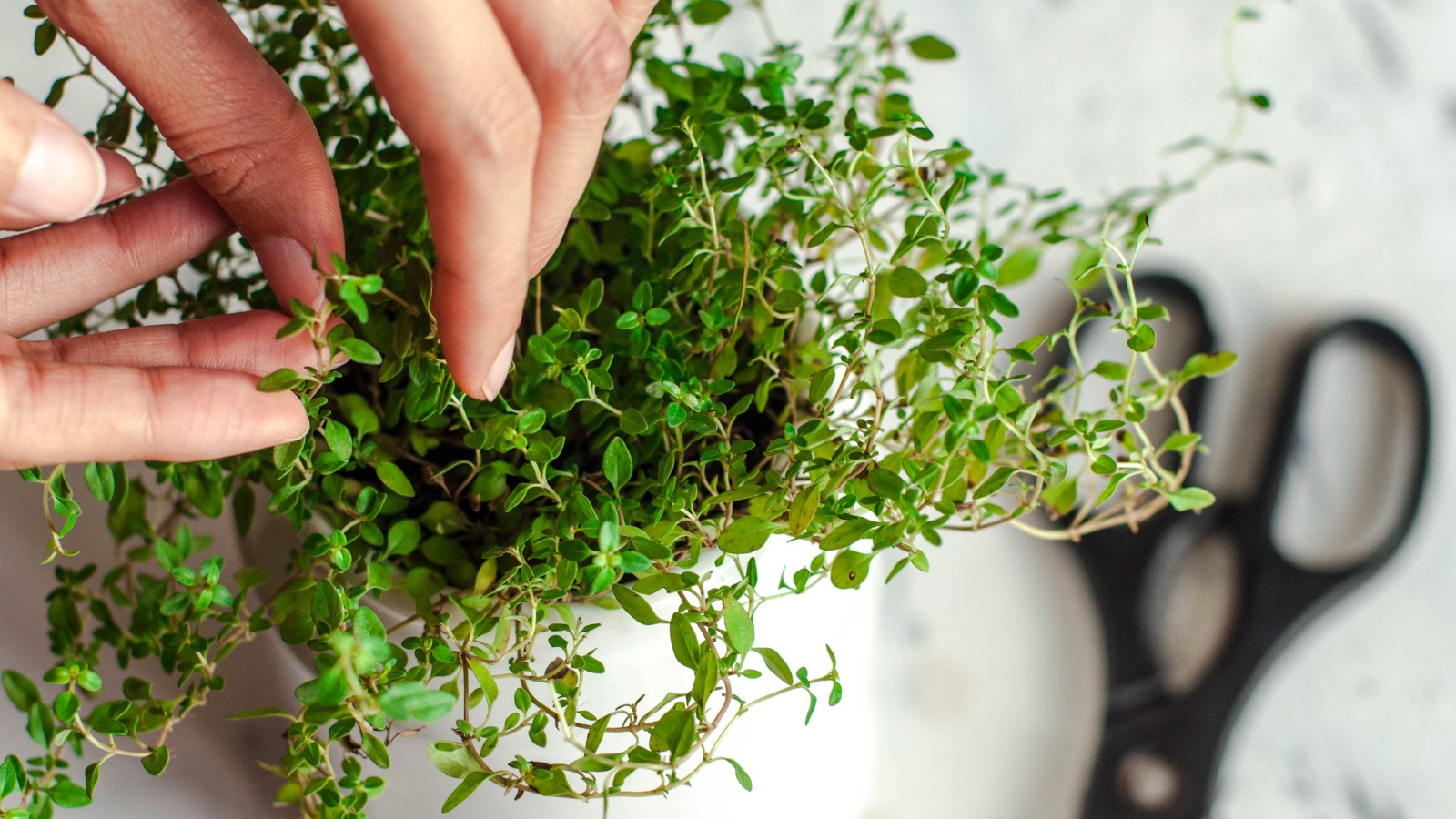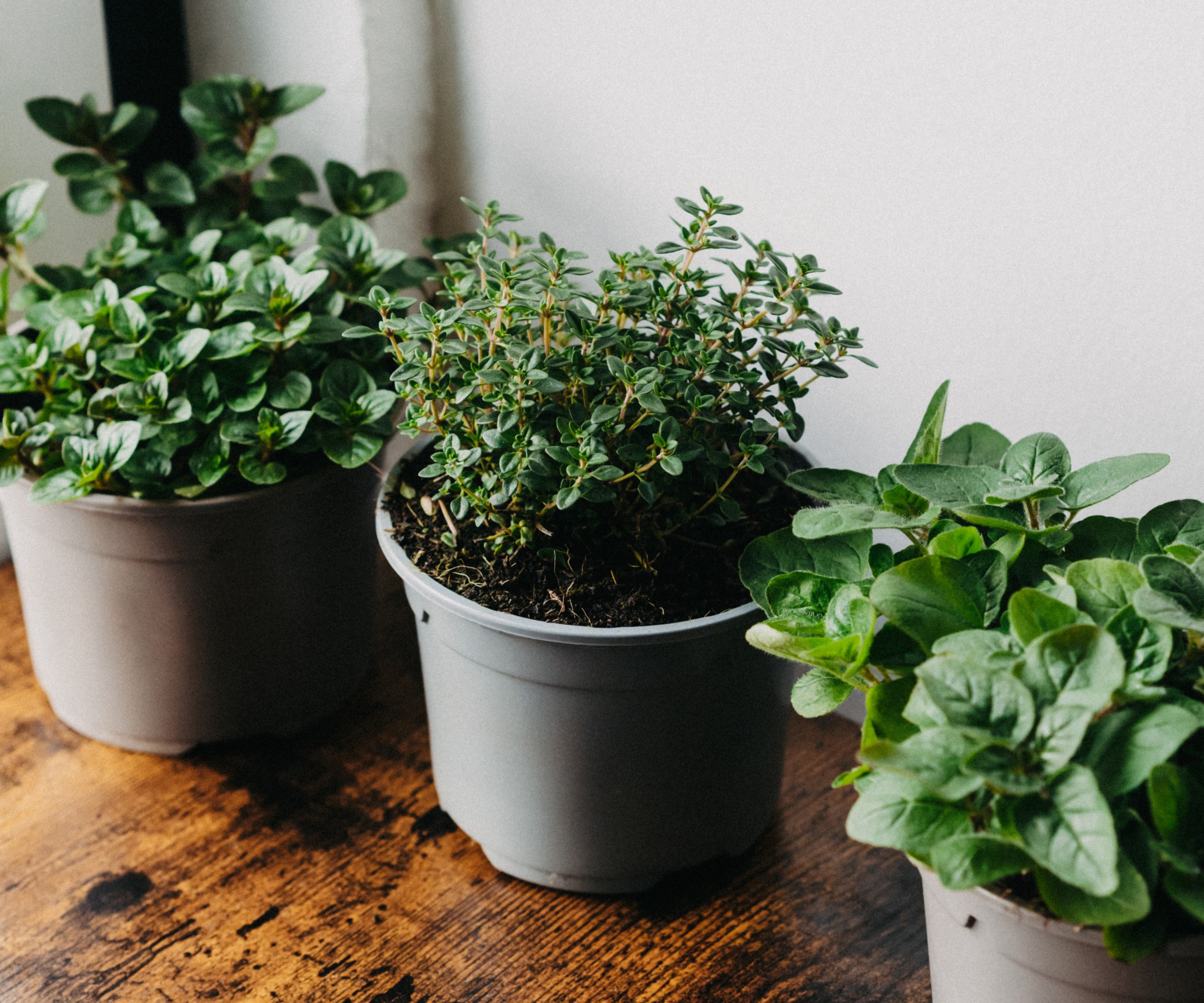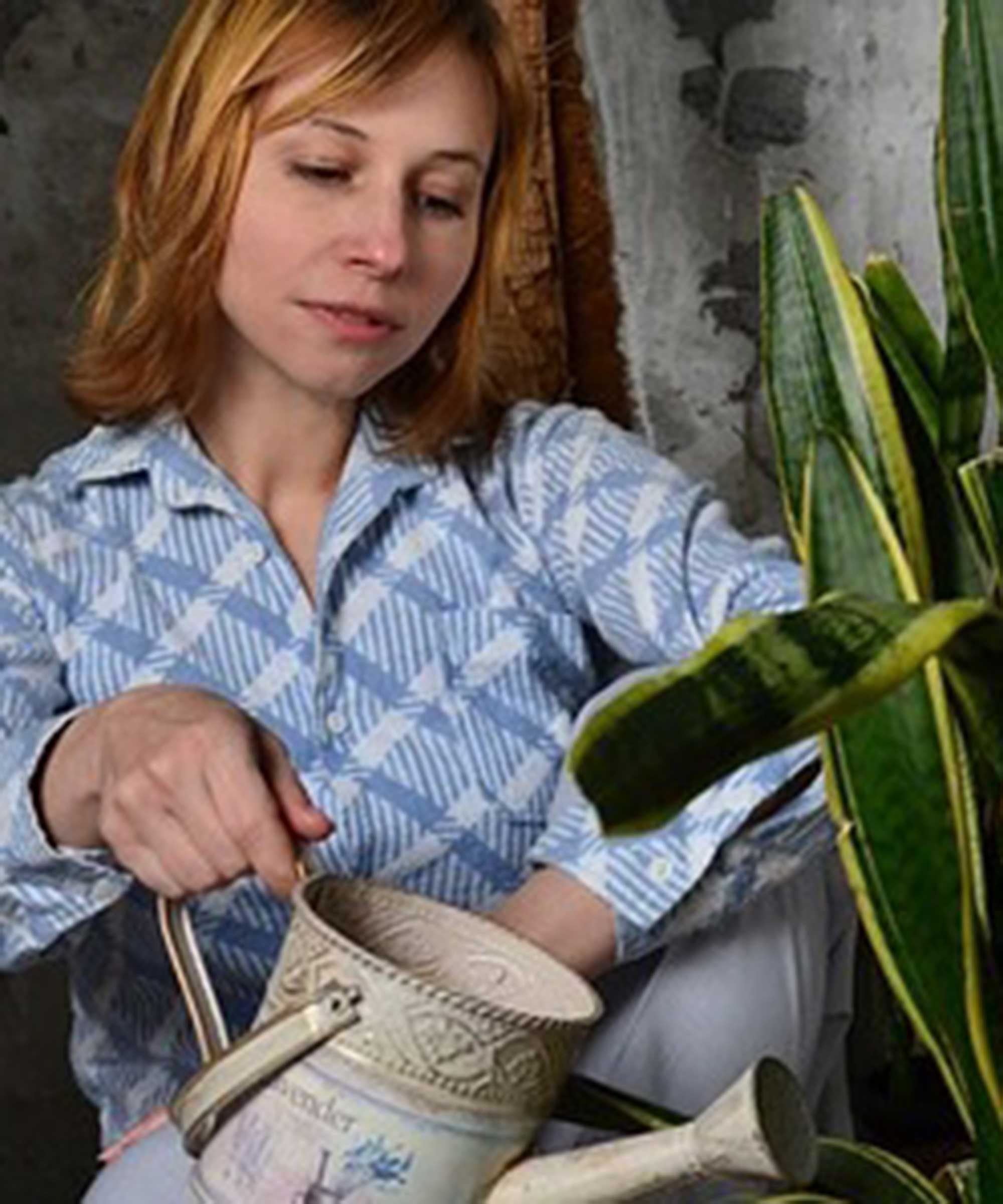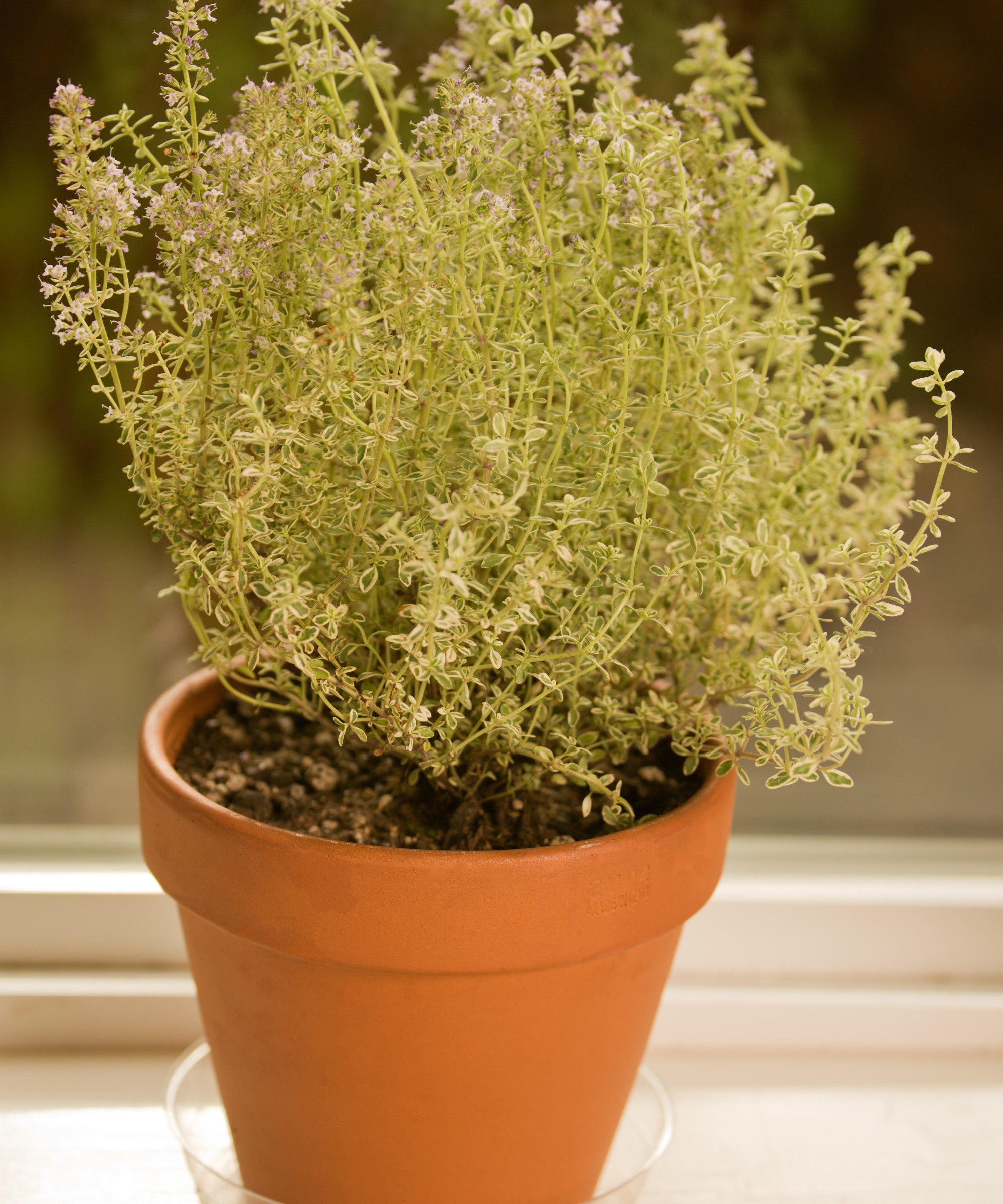How to grow thyme indoors – expert tips for flourishing herbs in a sunny window
Learn how to give thyme the right location, soil, and watering regime to keep plants happy and healthy indoors


Thyme is a fantastic fuss-free and multifaceted herb that can be successfully grown indoors throughout the year. This compact and simple-to-look-after plant allows even novice gardeners to be able to have fresh herbs in their homes.
Getting the levels of sunlight correct, and being careful when it comes to watering, are two important aspects to consider when growing thyme indoors. Not getting those factors right can lead to your thyme plants struggling to thrive.
If you are wanting to learn more about how to grow thyme indoors then we take a closer look at all the key points you need to consider and how to care for your indoor herbs to make sure they are healthy and give you all the fresh harvests you require.

Thyme and other herbs can happily grow indoors
Can you grow thyme indoors?
Thyme is an ideal candidate for growing herbs indoors and anyone looking for easy indoor plants to add greenery to their space should consider this Mediterranean herb. It opens up the doors for anyone in an apartment to have a herb garden indoors and within arm's reach of their kitchen.
Diana Cox, an experienced gardener and owner of The Gardening Talk, hails thyme as ‘one of the easiest herbs to cultivate indoors’, as it ‘requires little water and can tolerate a range of temperatures.'
Sunlight is one key area that you need to get right when growing thyme indoors, as it is a plant that likes a lot of sun. She adds: ‘For optimal growth, place your thyme in a sunny window that receives at least six hours of sunlight daily. If natural sunlight is limited, consider using grow lights to provide the necessary illumination.’
Thyme can be grown in a range of containers, including terracotta or plastic ones, however, it is always important that any pot has drainage holes in the bottom for excess water to escape from. This helps to prevent the roots from sitting in soggy soil, which is something thyme plants will not tolerate.
Design expertise in your inbox – from inspiring decorating ideas and beautiful celebrity homes to practical gardening advice and shopping round-ups.
Terracotta pots are often preferred when growing herbs in pots as, not only do they look nicer for inside the house, but they dry out quicker than plastic alternatives and reduce the risk of thyme being affected by root rot. Diana Cox recommends: ‘Opt for a small, shallow pot to promote quicker soil drying, which thyme prefers.’ One example of such a pot is these terracotta pots on Amazon that measure 7.6 inches wide by 2.6 inches deep.
Any potting soil for herbs ideally needs to be well-draining, and that is very important for thyme as it likes a growing medium that drains really well. A good mix for thyme would be soil mixed with the likes of sand or perlite.
There are options for how to propagate herbs such as thyme to grow indoors. You can either buy young plants, grow thyme from seeds and then plant herbs into your chosen container, or thyme can be grown from softwood cuttings. You can see a range of thyme seeds suitable for growing indoors from True Leaf Market.

Diana Cox is the proud founder of TheGardeningTalk.com and has over a decade of gardening experience. Through her blog, she aims to inspire and motivate fellow gardeners by sharing practical techniques that are grounded in both personal experience and thorough research.

Porous terracotta pots help prevent thyme sitting in wet soil
How to care for thyme indoors
Thyme can be a simple plant to maintain, however, it will require a bit more attentiveness and action than when the culinary and aromatic herb is growing outside in a herb garden. The most important area to keep a close eye on and get correct is watering. Overwatering is a common mistake to avoid when growing herbs indoors and thyme is a plant that will not cherish sitting with wet roots in soggy soil.
Itamar Ben Dor from green living website Green-Life recommends: ‘Keep an eye on the moisture level. Water when the top inch of soil feels dry to the touch.’
Using your fingers to check the moisture content of the soil an inch or so down is a highly recommended way of watering plants in containers. If it still feels damp then refrain from adding extra water as, while you can fix an overwatered plant, it is best not to let it get to that point.
When it comes to feeding, thyme is very low-demanding. Itamar adds: ‘Thyme doesn't require heavy feeding. A balanced liquid fertilizer diluted to half strength can be applied every 4-6 weeks during the growing season.’
Prune your thyme regularly to keep the plant neat and bushy and also to encourage new growth to develop. While thyme is popular both fresh and dried in cooking, the herb can also be used to make teas, infused oils for cooking or massage, or can be added to cosmetics such as soap. Cut stems regularly for a healthy and productive thyme plant and repot them every few years as the plant develops woody stems. At this point, it can be separated and replanted.
Common indoor pests such as aphids, spider mites, or whiteflies need to be observed. These insects can suck sap from plants and cause lots of damage, so close monitoring is essential. You can get rid of aphids or other small insects by using homemade bug sprays or insecticidal soap, available at Amazon if required.

Thyme in pots need repotting every three years
How to overwinter thyme indoors
Thyme plants can be overwintered indoors if they are grown outside in herb planters or pots. Mediterranean garden herbs, including thyme along with sage and oregano, will overwinter outdoors fine, but you can continue to get a harvest of herbs through winter by bringing them indoors. Plants growing in the ground can even be potted up and brought inside for the winter months.
The time to bring them inside is when temperatures start to drop below 60F. Put plants in a bright spot, but not in direct sunlight, to acclimatize them to their new home for a few days before placing them on a sunny windowsill.
Thyme growing indoors, over those simply being overwintered outdoors, can be moved outdoors for the summer once the temperatures get above 60 F to allow the plants to revel in full sun throughout the warmer months.
FAQs
Can I grow thyme indoors year round?
It is possible to grow thyme indoors throughout the whole year on a sunny windowsill to have access to fresh, evergreen, sprigs of thyme year round. Even on the sunniest window ledge of the house, it might be necessary to use artificial lighting, such as these grow lights available at Amazon, to supplement the light levels during the winter months to ensure that thyme gets the amount of daily light it thrives for.
As well as growing thyme for culinary uses, it can also be beneficial as the herb has a smell that ants hate and can be used to keep the insects out of your house. It is regarded overall as one of the best repellent plants to take advantage of. As well as ants it is also a great wasp repellent plant too.

Drew has worked as a writer since 2008 and was also a professional gardener for many years. As a trained horticulturist, he worked in prestigious historic gardens, including Hanbury Hall and the world-famous Hidcote Manor Garden. He also spent time as a specialist kitchen gardener at Soho Farmhouse and Netherby Hall, where he grew vegetables, fruit, herbs, and cut flowers for restaurants. Drew has written for numerous print and online publications and is an allotment holder and garden blogger. He is shortlisted for the Digital Gardening Writer of the Year at the 2025 Garden Media Guild Awards.